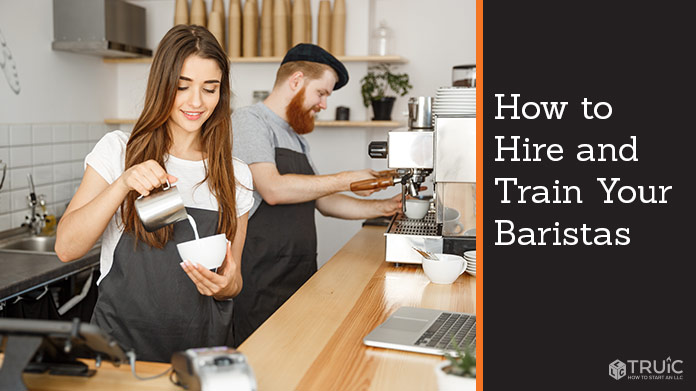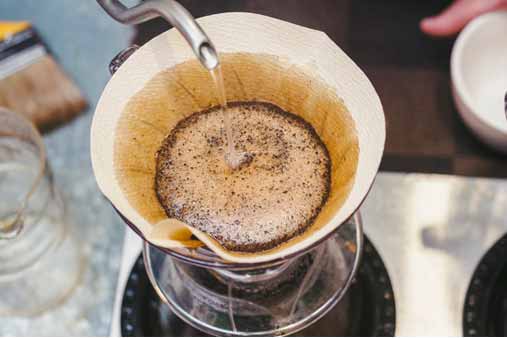How to Hire & Train Your Baristas
Your baristas play a key role in delivering a memorable customer experience. As a result, finding the right people and effectively training them is critical to the long-term success of your business.
This guide, written by coffee professionals, will walk you through the hiring and training process for your specialty baristas.
Recommended: Read our full, in-depth How to Start a Coffee Shop Business guides, inspired by coffee professionals, they will help make your coffee dreams real, from sourcing beans to hiring baristas, choosing the best POS system, forming an actual company, and everything in between.

Key Considerations for the Hiring Process
Beyond the expertise needed to brew a perfect cup of coffee or pour a rosetta into a well-crafted shot of espresso, the ability to create a pleasant customer experience should be a major factor as you consider who to hire for your shop. When evaluating candidates, assess which have an ability to create a strong bond with customers that will keep them coming back again and again.
Here are some additional things to keep in mind during your employee search:
- Food service-oriented job search sites, such as Poached, can help streamline the process of finding qualified candidates.
- Consider including a coffee-related question within your job posting to give you an idea of each applicant’s knowledge base and personality. For example, ask them to answer “What’s your favorite coffee origin and why?” as part of their application.
- Working interviews can be a great way to see an applicant in action. Consider asking applicants to make a latte as part of their in-person interview to show off their skills.
Coffee knowledge, unsurprisingly, is another key factor to help you identify your top candidates in the hiring process. This knowledge — paired with a passion for sharing it — creates a unique experience for customers. However, extensive coffee knowledge is not always necessary if you have the time to train a new hire. In that case, you’ll have a clean slate to work with — thus eliminating the common need for baristas to unlearn bad coffee habits.
Recommended: Read about The Best Coffee Education and Certification Programs
Key Considerations for Employee Training
Once you hire your team, you must prepare them to deliver outstanding customer service.
Coffee training can range in difficulty, depending on how much experience your baristas already have. Start by building a solid foundation among all new hires regardless of each trainees’ current experience.
Here are the key topics to cover in your foundational training for new staff:
Coffee Knowledge
Coffee is all about the details — from its origin to the type of roast. Arming your employees with enough information to understand and then clearly communicate the details of each of your coffee products is critical. Presentations, printed handbooks, and interactive experiences — such as visiting your roastery — are great tools to use in this process.
Pro Tip: Be the ideal barista. Leading by example in your coffee knowledge and ability to make great coffee can encourage a high work ethic among your staff.
Espresso Preparation
This training should start by familiarizing staff with your specific espresso machine and commercial grinder and how various features work. Next, provide instruction and hands-on practice in dosing espresso grounds by weight as well as tamping and pulling individual shots.
For example, baristas should practice applying about 30 pounds of flat pressure to the grounds to create a level surface that ensures even extraction. Next, have them wipe the grounds off the side of the portafilter and practice pulling a shot. Once they’ve pulled a shot, conduct a tasting and teach them the harder part of pulling espresso shots: adjusting the grind. While baristas must ultimately learn to adjust the espresso grind by taste, here are two basic guidelines to follow:
- If the espresso tastes bitter, it’s most likely over-extracted and they should make the grind finer.
- If the espresso tastes acidic, it’s most likely under-extracted and they should coarsen the grind.
Milk Preparation
Steaming milk can be the most challenging part of making a specialty coffee drink for new baristas. It requires not only skill, but also muscle memory they simply must develop through experience. Demonstrate the whirlpool technique required to create a microfoam in the milk and then give new hires plenty of time to practice making whirlpools while steaming milk.
Drink Development:
Teach trainees about your preferred method for building coffee drinks, including your desired ratio of milk to espresso. For example, the volume of espresso used in a cappuccino can range from four to six ounces depending on the cafe.
- Latte art is another key element in drink building. It’s a trademark characteristic of third-wave coffee so training baristas to pour a beautiful drink is essential. Latte art training often starts with forming hearts and then moves on to harder pours like a rosetta once a barista masters the heart.
Proper Presentation
Pairing a spoon and saucer with third-wave coffee drinks is a common presentation. Train your baristas to pour latte art in a way that customers will see the design when holding the cup (most commonly with their right hand) and then drink from the base of the design. Baristas also should practice serving drinks with the latte art design facing the customer, paired with the appropriate saucer and spoon placement.
Pro Tip: Some coffee roasters provide coffee training to wholesale clients so check with your roaster to see if you qualify for this additional service.
Launching a specialty coffee shop is no small task. Check out our comprehensive Opening a Coffee Shop Business guide.

